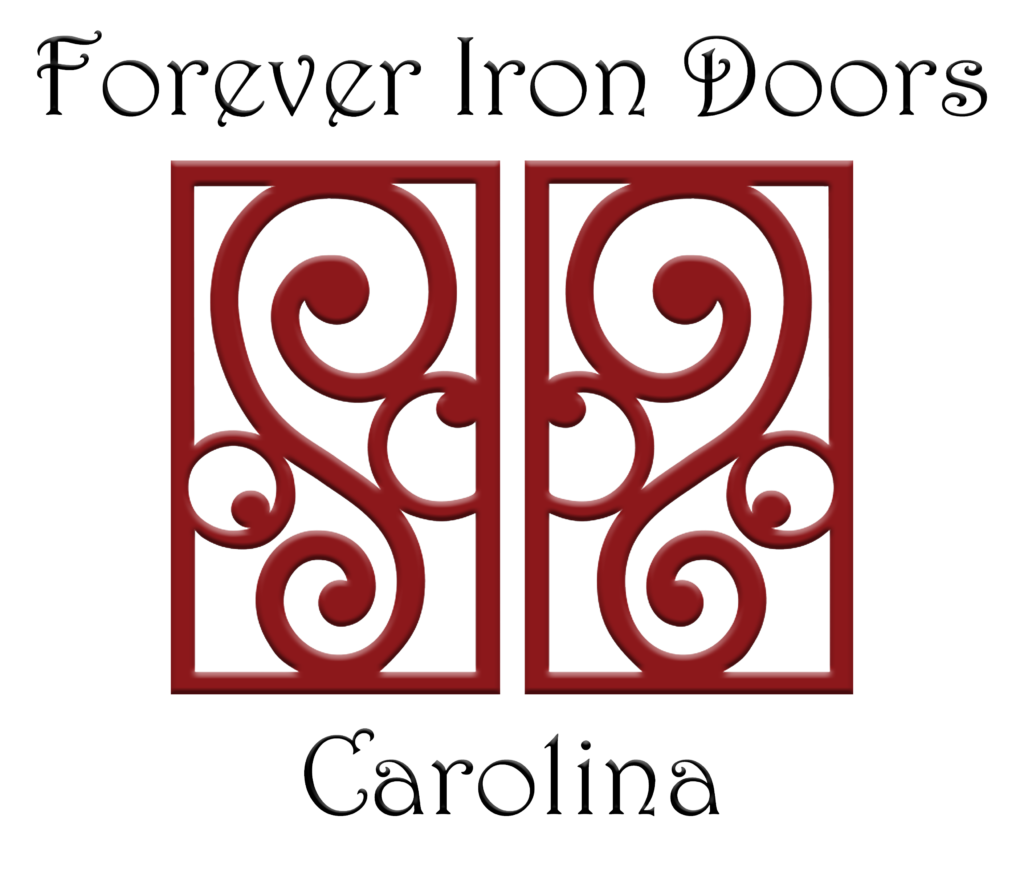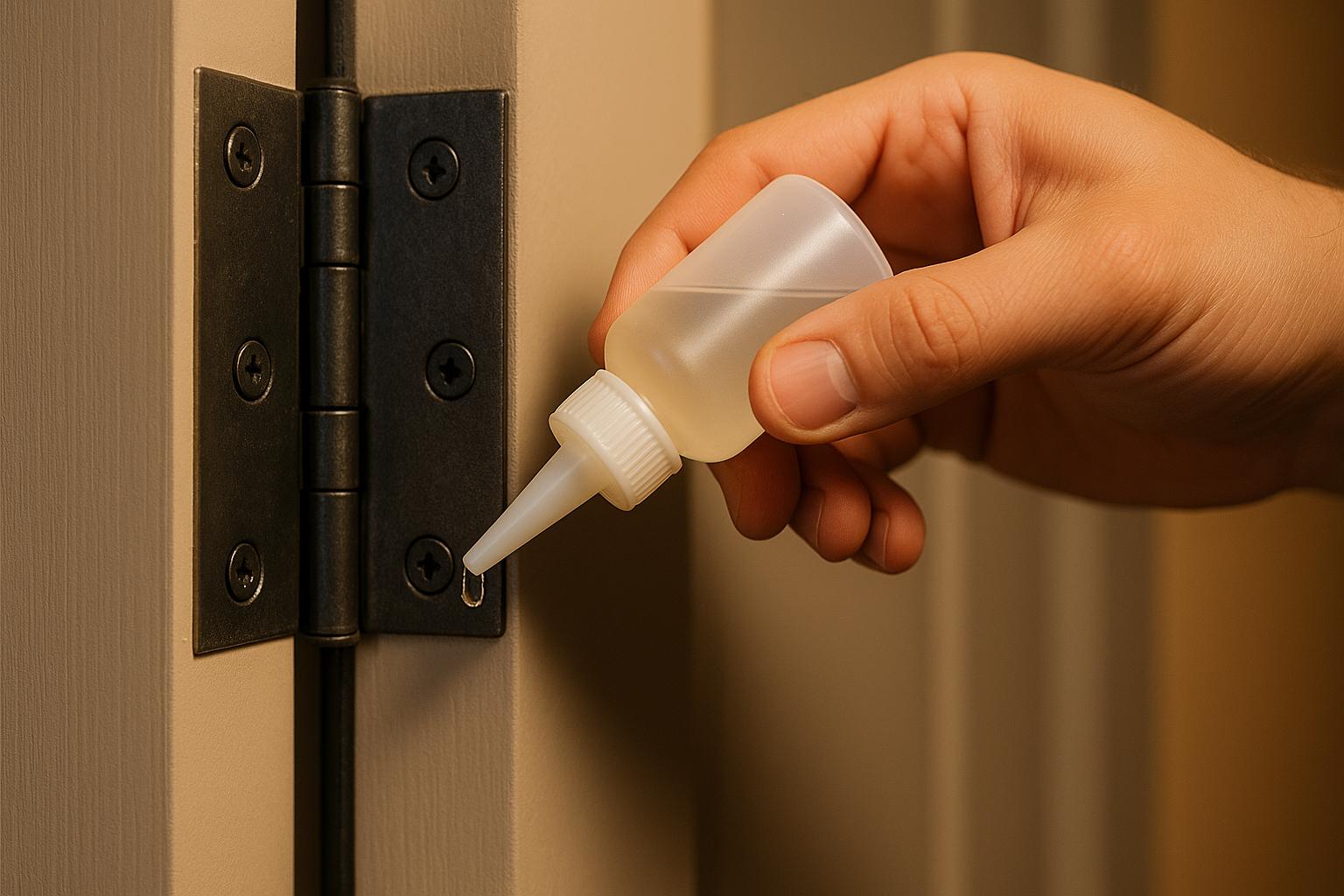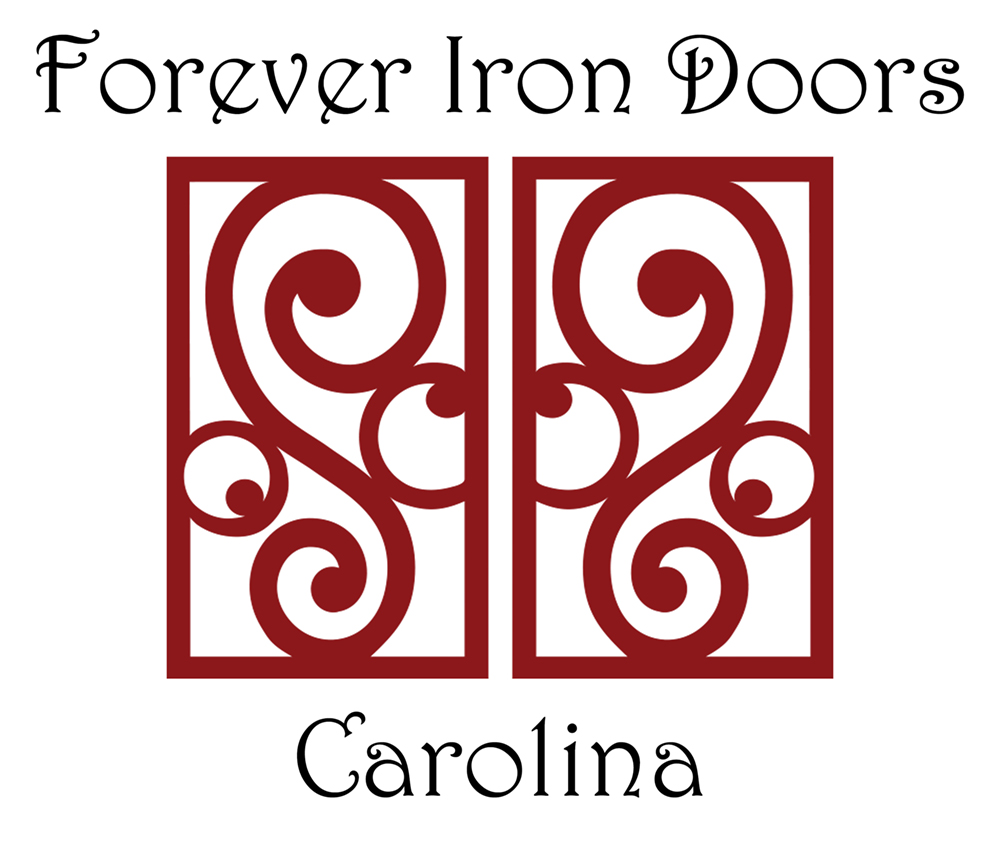Iron door hinges need regular care to keep them quiet, smooth, and rust-free. Without maintenance, hinges can squeak, stick, or corrode, leading to costly repairs. Here’s a quick guide to keep your wrought iron hinges in top shape:
- Choose the right lubricant: Silicone spray for general use, white lithium grease for heavy-duty doors, or graphite powder for a mess-free option.
- Avoid common mistakes: Skip WD-40 and household oils, as they attract dirt and can cause long-term damage.
- Prep before lubricating: Clean and dry hinges thoroughly to remove dirt and rust.
- Apply carefully: Use a small amount of lubricant to avoid buildup and test by opening and closing the door.
- Stick to a schedule: Lubricate high-use doors every 3–4 months and less-used doors twice a year.
Proper lubrication not only prevents squeaks but also extends the life of your hinges, even in harsh conditions like humidity or salty air.
Selecting the Right Lubricant for Iron Hinges
Choosing the correct lubricant is essential to keep your iron hinges working smoothly and to reduce maintenance headaches. Using the wrong product might offer a quick fix but could end up attracting dirt, breaking down over time, or even damaging the hinges. Understanding which lubricants work best for different scenarios helps you maintain your doors and prolong their lifespan.
Best Lubricants to Use
Silicone-based sprays are a versatile and practical choice for wrought iron hinges. They’re lightweight, affordable, and simple to apply, making them ideal for routine maintenance. These sprays perform well in cold weather and don’t attract dust. A standout product is the WD-40 Specialist Silicone Lubricant, known for its waterproof formula that’s safe for metal, rubber, vinyl, and plastic. Its folding straw ensures precise application, leaving behind a thin, clear, and odorless layer of protection that lasts.
For more demanding tasks, white lithium grease is the go-to option. This thicker lubricant is perfect for exterior doors or high-traffic entrances, as it withstands harsh weather and extreme temperatures up to 302°F (150°C). The AGS White Lithium Grease is highly regarded for its ability to resist heat, cold, and water. Unlike thinner lubricants, it stays where it’s applied without dripping, making it a reliable choice for hinge pins and pivot points.
If you’re looking for a mess-free solution, graphite powder is an excellent dry lubricant. It doesn’t attract dirt or dust and provides long-lasting lubrication with minimal cleanup. It’s particularly effective for interior doors or situations where you want to avoid liquid lubricants. While it’s low-maintenance, be cautious – graphite powder can stain surfaces.
| Lubricant Type | Best For | Temperature Range | Longevity | Mess Factor |
|---|---|---|---|---|
| Silicone Spray | Indoor/outdoor, humidity | Cold weather ready | Moderate | Low |
| White Lithium Grease | Heavy doors, exterior use | Up to 302°F (150°C) | High | Moderate |
| Graphite Powder | Interior doors, workshops | Standard range | High | Low (stains) |
The environment plays a big role in selecting the right lubricant. High humidity or coastal areas with salty air can speed up rust and corrosion, making moisture-resistant options like silicone sprays a must. Temperature changes can cause metal to expand and contract, which might degrade some lubricants over time. For doors exposed to UV rays, chemical vapors, or airborne dust, you’ll need a product that either resists these elements or avoids attracting particles that could increase wear. Always match your lubricant to the door’s environment and how often it’s used for the best results.
Lubricants to Avoid
Some products that seem like good options at first glance can actually do more harm than good.
WD-40, for instance, might seem like an obvious choice, but it’s primarily a degreaser and solvent – not a long-term lubricant. While it can silence a squeaky hinge temporarily, it strips away existing lubrication and can dry out the hinges over time, potentially making the problem worse. It doesn’t provide the lasting protection that wrought iron hinges need.
Household oils like vegetable oil, olive oil, baby oil, or petroleum jelly might stop squeaks for a short while, but they create more issues in the long run. These oils attract dust and turn sticky over time, leading to friction and potential damage. The residue they leave behind makes cleaning difficult and causes dirt buildup, which increases wear on moving parts.
Petroleum-based lubricants can also be problematic. They can degrade plastic and rubber components in hinge assemblies, potentially damaging seals and bushings, which could lead to expensive repairs.
The trick is to choose a lubricant that matches your specific needs. Consider factors like whether the door is indoors or outdoors, how frequently it’s used, the local climate, and whether you prefer a spray or a more precise grease application. High-quality products like the CRC Power Lube Industrial High Performance Lubricant, which contains PTFE for enhanced lubrication and features a detachable nozzle for precision, are excellent examples of specialized solutions for wrought iron hinges.
Preparing Hinges for Lubrication
Getting hinges ready for lubrication is key to ensuring they work smoothly. Skipping this step can leave dirt trapped inside, turning lubricant into a sticky mess that attracts even more grime. Start by gathering your tools and removing the hinge pins before giving everything a proper cleaning.
Cleaning the Hinges
You’ll need a few basic items: a small brush, cloths, warm water, and mild detergent. To remove hinge pins, grab a flat-head screwdriver and hammer. For particularly stubborn pins, an awl or nail can help. If rust or heavy grime is present, keep sandpaper, a wire brush, or a metal scraper handy.
Begin by removing the hinge pins. Position a flat-head screwdriver under the pin head and gently tap it with a hammer until the pin starts to loosen. Once it’s loose enough, pull it out completely. If a pin won’t budge, use an awl or nail from underneath to push it out.
With the pins removed, it’s time to clean. Wash the hinge parts using warm, soapy water, scrubbing crevices with a brush to get rid of dirt. For rust or thick buildup, carefully scrape it off using sandpaper or a wire brush. Be gentle – you don’t want to damage the metal. If rust is a recurring issue, applying a rust-inhibiting primer and a coat of metal paint can help protect the hinges in the future.
Make sure everything is completely dry before applying lubricant. Use clean cloths to wipe moisture from the pins, pivot points, and hinge plates. Leftover water can prevent the lubricant from sticking properly and may even lead to rust. For a final touch, rubbing alcohol can help remove any lingering cleaning solution, as it evaporates quickly.
Once cleaned and dried, the hinges will be ready to accept lubricant, ensuring smooth operation while also giving you a chance to check for wear or damage before putting everything back together.
How to Lubricate Iron Door Hinges
When your iron door hinges are clean and dry, the next step is to apply the right amount of lubricant. This ensures smooth operation without attracting dirt or grime.
Applying the Lubricant
Proper application is key to keeping your wrought iron hinges in great shape. Start by focusing on the hinge pin and moving parts:
- For white lithium grease, use your finger or a cotton swab to apply a small amount directly to the pivot points. This type of grease is long-lasting, so you won’t need to reapply it as often as other options.
- With silicone spray, hold the can about 6 inches away from the hinge and spray lightly, concentrating on the pin area and the spots where the hinge leaves meet. Silicone spray is a great choice for heavy-use doors because it doesn’t attract dirt and lasts longer than WD-40.
- If you prefer dry lubricants like 3-IN-ONE Lock Dry Lube, use them sparingly. These dry clear and help avoid mess while still providing effective lubrication.
For precise application, use a cotton swab or a small brush. This is especially important if your hinges have decorative elements or are near glass inserts, as excess lubricant could cause stains or drips.
Don’t overdo it. Too much lubricant can attract dust and grime, which might make the hinges stick over time. If you’re using household alternatives like petroleum jelly, apply only a tiny amount since it’s greasy and can leave hinges looking messy.
Once the lubricant is applied, you’re ready to reassemble the hinges and test their movement.
Reassembling and Testing Hinges
After lubrication, reassemble the hinges by carefully aligning the hinge pins with the knuckles. Gently tap the pins back into place.
Next, open and close the door three to four times. This helps spread the lubricant evenly across all the contact points, reducing friction and ensuring smooth movement. You should notice the door operating more effortlessly with each swing.
Finally, wipe away any excess lubricant with a clean cloth. This step is crucial to prevent sticky residue, drips, and dirt buildup that could compromise both the look and function of your hinges. Be especially careful around glass or finished surfaces to avoid staining.
Proper reassembly and testing are essential for maintaining your hinges in the long run.
Maintenance Schedule
Keeping up with a regular lubrication schedule will help extend the life and performance of your iron door hinges.
- High-use doors (like front entrances) should be lubricated every 3–4 months. These doors face constant stress and exposure to weather, so they need more frequent attention.
- Moderate-use doors (such as side entrances, patio doors, or decorative gates) can usually go about 6 months between lubrications. Watch for signs like squeaking or stiffness, which indicate it’s time for maintenance.
- Low-use doors (like storage areas, basement entrances, or seasonal gates) may only need lubrication once or twice a year. However, don’t neglect them entirely – lack of movement and moisture exposure can cause hinges to seize up over time.
Your environment also plays a big role in how often you’ll need to lubricate. If you live in a coastal area with salty air, a humid climate, or a region with extreme temperature swings, you’ll likely need to lubricate more often. Similarly, doors exposed to rain or direct sunlight will require more care compared to those under covered porches or overhangs.
If you’re using white lithium grease, you might be able to stretch these intervals slightly because of its durability. On the other hand, lighter lubricants like silicone spray may require sticking to the shorter timeframes for the best results.
sbb-itb-cd90297
Troubleshooting and Extra Maintenance Tips
While proper lubrication is essential, it doesn’t solve every problem. Hinges can still misalign, wear out, or even suffer from over-lubrication. Catching these issues early can save you from bigger headaches down the road.
Fixing Persistent Squeaks or Sticking
If your door still squeaks or sticks after lubrication and reassembly, here are some additional steps to consider:
- Check for misaligned hinges: Sometimes, squeaks or sticking result from the door hanging unevenly. Look to see if one corner of the door droops or if it doesn’t close flush with the frame. Misalignment could be the culprit.
- For minor shifts, loosen the screws holding the hinges to the frame, reposition the hinge slightly, and then tighten the screws securely.
- For more serious alignment issues, you may need to remove the door entirely and rehang it properly.
- Address over-lubrication: Too much lubricant can attract dust and debris, leading to a sticky, gummy buildup. If this happens, clean the hinges thoroughly with a degreasing agent and apply a lighter layer of lubricant. Regular maintenance can help avoid this problem in the future.
- Inspect hinge pins: Sometimes, worn hinge pins are the issue. If a pin has grooves or flat spots, it won’t rotate smoothly, even with lubrication. Remove the pin, use fine-grit sandpaper to smooth out any rough spots, and reinstall it.
- Evaluate weather stripping: Thick or improperly positioned rubber seals can create resistance when opening or closing the door. Make sure the seals are not overly compressed or misaligned.
When to Replace Hinges
If cleaning, lubricating, and adjusting don’t resolve the problem, it might be time to replace the hinges. While regular maintenance can extend their lifespan, there are clear signs that replacement is necessary:
- Severe rust damage: Surface rust can often be cleaned and treated, but if rust has eaten through the metal, the hinge’s structural integrity is compromised, and replacement is the best option.
- Loose hinge knuckles: If the knuckles continue to wobble even after tightening all screws, the metal may be weakened or cracked, which could affect the door’s stability.
- Cracks in hinge leaves: Stress fractures in the hinge leaves – where they attach to the door or frame – are a sign of wear that will only worsen over time.
- Stripped screw holes: While a single stripped hole can sometimes be repaired with wood filler or larger screws, multiple damaged holes might require replacing the hinges altogether.
The lifespan of a hinge depends on how frequently the door is used and how well it’s maintained. Heavily used doors often need hinge replacements sooner, while lightly used or decorative doors may last much longer.
Maintaining the Finish of Wrought Iron Doors
Keeping the finish of wrought iron doors in good condition is about more than just looks – it also protects the hinges and the door itself. Here’s how to maintain that finish:
- Clean regularly: Use mild soap and water to remove dirt and prevent moisture from being trapped against the metal.
- Inspect for damage: Every few months, check for chips, scratches, or thinning paint. Touch up any small chips with paint specifically made for metal to prevent rust from forming.
- Apply protective coatings: Twice a year, apply a thin coat of automotive paste wax or a metal protectant to add a shield against moisture and UV damage. Buff the surface to enhance the protection and shine.
- Focus on problem areas: Pay extra attention to horizontal surfaces like decorative scrollwork or the bottom rail, where water tends to collect. These spots may require more frequent maintenance to prevent rust.
- Care for glass inserts: If your door includes glass, use a standard glass cleaner but avoid letting it touch the metal frame. Some cleaners contain chemicals that could harm the finish over time.
For expert advice or help with maintenance, you can always reach out to professionals like Forever Iron Doors Carolina. They can provide assistance tailored to your specific needs.
Conclusion
Keeping your hinges properly lubricated not only ensures smooth operation but also helps prevent corrosion. Well-cared-for hinges reduce annoying squeaks, make heavy doors easier to use, and maintain their structural strength, which can even enhance the overall value of your property. This becomes especially important in tough weather conditions, like high humidity or salty air, which can speed up corrosion.
By sticking to the cleaning, lubrication, and maintenance tips shared in this guide, you’re making a smart investment in the durability of your door hinges and steering clear of unnecessary, costly replacements. Adding hinge care to your regular maintenance routine can make a big difference.
Whether your wrought iron door is purely decorative or built for heavy-duty use, consistent maintenance keeps it looking great and working flawlessly for years to come. For expert advice tailored to your needs, reach out to trusted professionals like Forever Iron Doors Carolina.
FAQs
Why shouldn’t I use WD-40 or household oils on iron door hinges?
Using WD-40 or common household oils on iron door hinges might seem like a quick fix, but it can create bigger problems down the line. These products often attract dirt and dust, which can accumulate and make the hinges stiff or wear them out faster. Plus, WD-40 isn’t actually a proper lubricant – it’s meant to displace water. Over time, it can even harm rubber seals, which might lower energy efficiency and lead to additional damage. For long-lasting performance and smoother movement, stick to a lubricant specifically made for metal hinges.
How can I tell if my door hinges need adjustment or replacement?
If you’re struggling to open or close your door, notice scraping or squeaking noises, or see uneven gaps around the edges, it’s a good idea to check the hinges. Common red flags include a sagging door, one that tilts to the side, or doesn’t sit evenly within the frame.
Take a closer look at the screws on the hinges as well. Stripped, loose, or uncooperative screws that won’t tighten properly are clear indicators that your hinges may need repair or replacement. Addressing these issues promptly can help restore smooth door movement and avoid further wear and tear.
What can I do if my iron door hinges are still squeaking or sticking after applying lubricant?
If your hinges continue to squeak or stick even after using lubricant, it’s time to dig a little deeper. Start by giving them a thorough cleaning to get rid of rust, dirt, or debris that could be causing the problem. Once they’re clean, apply a high-quality lubricant like white lithium grease, which works great on metal parts and helps ensure smooth movement.
Still having issues? Check the hinges for loose screws or misalignment. Tighten any screws that need it and make sure everything lines up correctly. If the hinges are heavily worn or damaged, you may need to replace them entirely to bring back smooth and quiet operation.



